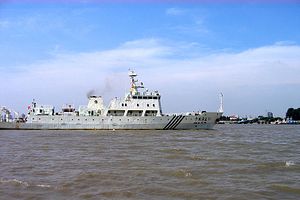As The Diplomat readers already know, the territorial disputes in the South China Sea were a major topic of discussion at the various ASEAN meetings last week, from the ASEAN foreign ministers’ meeting to the ASEAN Regional Forum (ARF). China, which had previously requested that ASEAN stay away from the topic entirely, was not pleased to be so criticized (both obliquely and directly).
On August 6, China’s foreign minister, Wang Yi, fired back at Beijing’s critics, particularly his counterparts from the Philippines (Albert del Rosario) and Japan (Fumio Kishida). The Chinese Foreign Ministry, which posted Wang’s remarks on its website, called his speech “an impromptu response… comprehensively elaborating China’s position and refuting the groundless accusations from the Philippines and Japan.”
Wang’s remarks boil down to two main points: there is no problem in the South China Sea, and the Philippines and Japan are more guilty of violating international law than China is.
Wang begins by saying that “the situation in the South China Sea is stable on the whole, and there is no possibility of major conflicts.” It’s a clear attempt to divert the rampant media focus on growing tensions and possible danger in the South China Sea, which has been built up largely by numerous expressions of concern from the United States, the Philippines, Japan, and others. In addition to the emphasis on regional tensions, “which [does] not conform to reality,” in Wang’s view, he also refuted the notion that freedom of navigation is not at risk.
“Up to now, there has not been a single case in which freedom of navigation in the South China Sea is impeded,” Wang said. “China stands ready to work with other parties to continue to ensure freedom of navigation and overflight in the South China Sea.”
Wang then outlined China’s historical claims to all of the South China Sea islands, before taking the Philippines and Japan to task for their own bad behavior.
In Manila’s case, Wang complained of the grounding of the BRP Sierra Madre on Second Thomas Shoal. “When China made representations, the Philippines claimed that it could not tow the warship away due to ‘the lack of spare parts’… The Philippines, instead of keeping its promise of removing the warship, has publicly stated that it had stealthily transported cement and other building materials to the warship in order to reinforce the installation,” Wang said. Manila admitted back in July that it was doing repair work on the grounded vessel to provide “minimum habitability” for the soldiers stationed on board.
Japan, meanwhile, was scolded for building its own artificial island at Okinotori, which Japan calls an “island” but China claims is a “reef.” In Wang’s words: “Over the past years, Japan spent 10 billion yen building the Rock of Okinotori, turning this tiny rock on the sea into a man-made island with steel bars and cement.” Wang continued, “So before making comments on others, Japan had better first reflect on what itself has said or done.”
Yet, lest anyone get the wrong idea from Wang’s condemnation of Japan for island-building, he added that “China is different from Japan.”
Wang’s remarks, which paint China as both a victim and a model of restraint in the South China Sea, are nothing new, and thus unlikely to convince any listeners that aren’t already in agreement. There was no indication that China acknowledges any of its actions as the least bit destabilizing or controversial – instead, Wang suggests other parties are to blame for getting nervous.
Toward the end of his remarks, Wang again rejected a U.S.-proposed halt on land reclamation, construction, and aggressive actions in the South China Sea. “[I]n our view, the U.S. proposal is not feasible,” Wang said. “For instance, what is to be stopped? As parties have different positions, what are the criteria for stopping? Who will set the specific criteria? There is no answer to these questions.”
Wang then defended China’s land reclamation activities, pointing out that China was actually the last party to partake in land reclamation. “[P]eople have been bringing changes to the ‘status quo’ all these years,” Wang said, responding to the oft-heard criticism that China is altering the status quo in the disputed region.
Wang also confirmed that China has completed its land reclamation activities–and that construction on the newly-created islands will continue.
“Next, we will build facilities mainly for public good purposes, including multi-functional lighthouse, search and rescue facilities for maritime emergencies, meteorological observatory station, maritime scientific and research center, as well as medical and first aid facilities,” Wang said.
That meshes with previous Chinese statements that the new facilities will mainly be for civilian purposes–but Chinese officials also note the parallel purpose of “better safeguarding territorial sovereignty and maritime rights and interests,” which suggests a military function is also part of the plan. According to the Asia Maritime Transparency Initiative, China is building an airstrip and port at Fiery Cross Reef, a possible naval facility at Mischief Reef, and another airstrip on Subi Reef.































